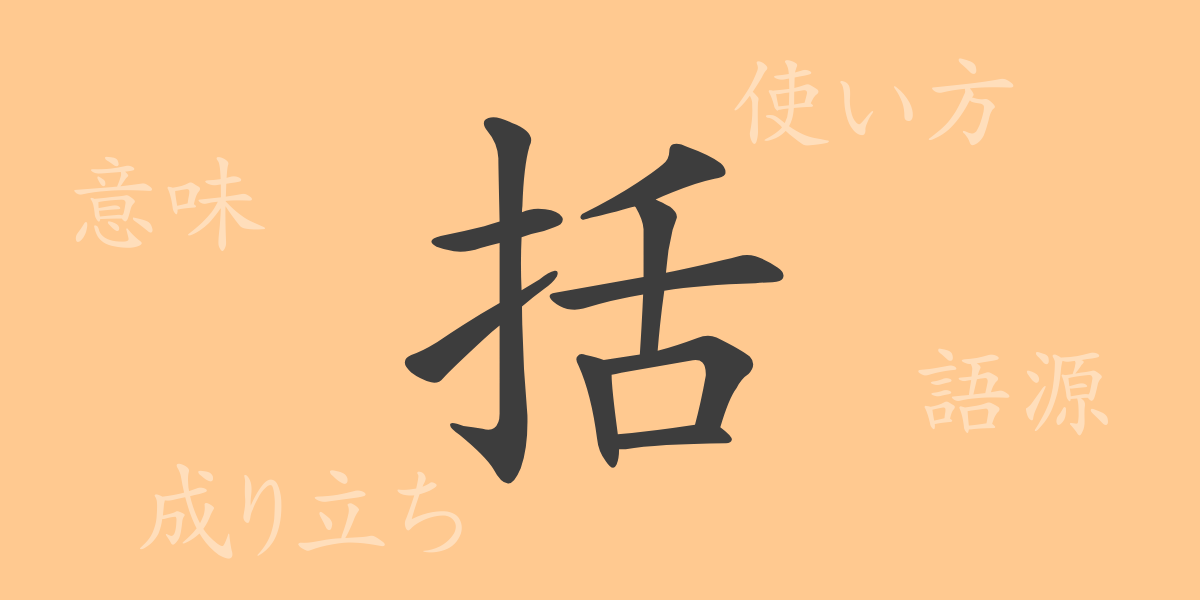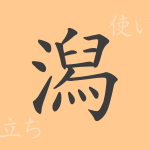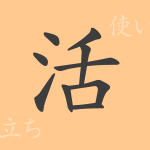In the written Japanese language, Kanji play a crucial role with their deep meanings and historical significance. Among them, the character “括” (Katu), while not frequently used, is listed in the Jōyō Kanji chart and becomes indispensable in certain contexts. This article delves into the allure of the Kanji “括” (Katu), exploring its origins, meaning, usage, pronunciation, and even extends to related idioms and phrases.
The Origin (Etymology) of 括
The Kanji “括” (Katu) originates from ancient China. It is composed of “扌” (Tehenn – the hand radical) and “舌” (Zetu – representing tying up bundles of threads). From this combination, meanings such as “to bind” or “to summarize” emerged, forming the fundamental concept of “括” (Katu). Over time, this Kanji has uniquely evolved across various cultures and languages.
Meaning and Usage of 括
“括” (Katu) primarily means “to tie up” or “to summarize.” It is specifically used to bundle things together or to define a limited scope. For example, “一括” (Ikkatu) refers to consolidating multiple items into one, and “区括” (Kukatu) means to manage a certain range as a whole. Furthermore, “括弧” (Kakko) refers to the punctuation marks used to enclose words in a sentence, demonstrating the various everyday scenarios where “括” (Katu) is utilized.
Pronunciation, Stroke Count, and Radical of 括
The Kanji “括” (Katu) is assigned specific readings and attributes in Japanese based on its shape and function.
- Pronunciation: On’yomi is “かつ” (Katu), Kun’yomi is “くく.る” (Kuku-ru)
- Stroke Count: A total of 9 strokes
- Radical: 手 (Tehenn – the hand radical)
Idioms, Phrases, and Proverbs Using 括 and Their Meanings
Idioms and phrases containing “括” (Katu) reflect its fundamental meaning. For instance, “一括払い” (Ikkatubara-i) means to pay the full amount at once instead of in installments, while “画一的に括る” (Kakuituteki-ni-kuku-ru) signifies treating everything the same, ignoring individual differences. The proverb “四海を括って兄弟となる” (Sikai-wo-kuku-tte-kyoudai-tonaru) conveys the idea of becoming friends with people all over the world like brothers. These expressions illustrate how the concept of “括” (Katu) is utilized in the Japanese language.
Conclusion on 括
While simple in form and meaning, the Kanji “括” (Katu) plays a vital role in enriching the expressions in the Japanese language. From the use of “括弧” (Kakko) in sentences to indicating financial transactions like “一括払い” (Ikkatubara-i), “括” (Katu) is an indispensable element in our communication. Through this article, we hope to deepen your understanding of the Kanji “括” (Katu) and encourage richer Japanese expressions.

























